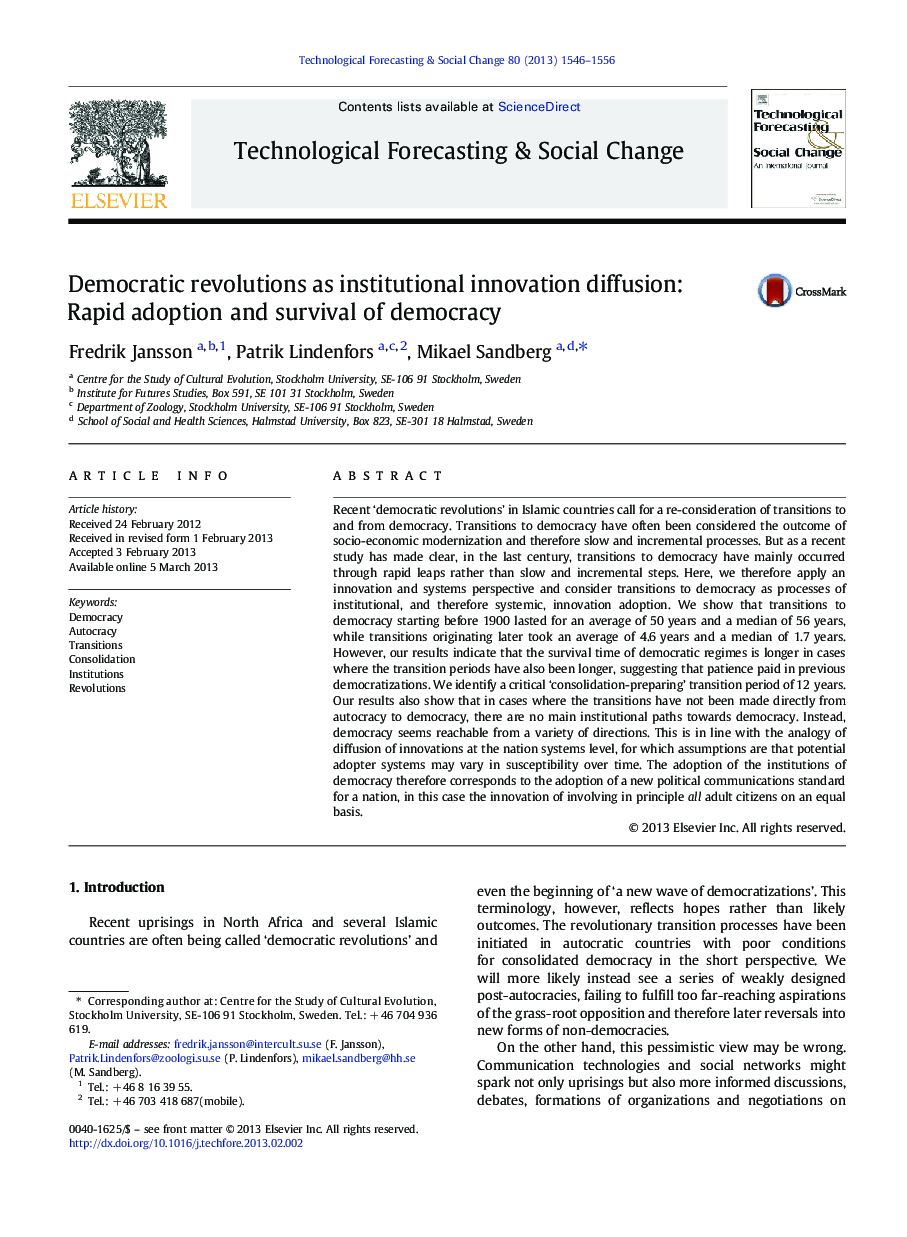| کد مقاله | کد نشریه | سال انتشار | مقاله انگلیسی | نسخه تمام متن |
|---|---|---|---|---|
| 896583 | 914846 | 2013 | 11 صفحه PDF | دانلود رایگان |

Recent ‘democratic revolutions’ in Islamic countries call for a re-consideration of transitions to and from democracy. Transitions to democracy have often been considered the outcome of socio-economic modernization and therefore slow and incremental processes. But as a recent study has made clear, in the last century, transitions to democracy have mainly occurred through rapid leaps rather than slow and incremental steps. Here, we therefore apply an innovation and systems perspective and consider transitions to democracy as processes of institutional, and therefore systemic, innovation adoption. We show that transitions to democracy starting before 1900 lasted for an average of 50 years and a median of 56 years, while transitions originating later took an average of 4.6 years and a median of 1.7 years. However, our results indicate that the survival time of democratic regimes is longer in cases where the transition periods have also been longer, suggesting that patience paid in previous democratizations. We identify a critical ‘consolidation-preparing’ transition period of 12 years. Our results also show that in cases where the transitions have not been made directly from autocracy to democracy, there are no main institutional paths towards democracy. Instead, democracy seems reachable from a variety of directions. This is in line with the analogy of diffusion of innovations at the nation systems level, for which assumptions are that potential adopter systems may vary in susceptibility over time. The adoption of the institutions of democracy therefore corresponds to the adoption of a new political communications standard for a nation, in this case the innovation of involving in principle all adult citizens on an equal basis.
► Innovation of democracy took place in the 19th century, now imitations are diffused.
► Transitions in the 1800s took a median of 56 years, but 1.7 years thereafter.
► The survival of democracy is longer when transition periods have also been longer.
► There is a critical democracy ‘consolidation-preparing’ period of 12 years of transition.
► Democracy diffusion explains lack of main institutional reform paths to democracy.
Journal: Technological Forecasting and Social Change - Volume 80, Issue 8, October 2013, Pages 1546–1556